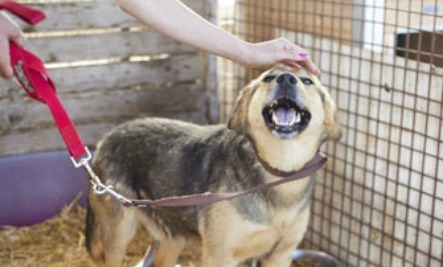Many people had to leave their homes. Pet owners were sometimes forced to decide if they could take their pets with them. Sometimes you forget your pet when you are preparing for an oncoming storm.
But we’ve got your back with what you can do to keep your pet safe during a natural disaster.
RESEARCH A SAFE PLACE TO TAKE YOUR PETS
Most emergency shelters do not allow pets. Ask friends or relatives if they can shelter you and your pets.
Look for pet-friendly facilities and lodging in your vicinity. Find listings at http://www.petswelcome.com or http://www.pets-allowed-hotels.com or google: pet friendly hotels in Connecticut.
Call your local pet boarding facilities, humane societies, and animal control shelters to learn about their restrictions and policies. Keep a list of these facilities in your pet emergency kit.
If you evacuate your home, do everything you can to take your pets with you. Animals left behind can be injured, lost or killed.
If you must leave pets behind, secure them in a bathroom (with drinking water in the tub), leave out plenty of food, and alert local officials that your pets are in your home.
ASSEMBLE AN EMERGENCY KIT FOR PETS
Whether you stay home or evacuate, keep a pet emergency kit with your family’s emergency kit. Use plastic zipper bags to protect the items. Items should include:
Collar with ID tags and sturdy leash
Two-week supply (or more) of each pet’s medication
Photocopies of health records and a recent photo taken of you with your pets
Two-week supply of pet food and bottled water, and bowls for each.
First-aid supplies, including bandages, tape, tweezers and antibacterial ointment (Ask your vet for recommendations)
Secure, covered carrier/crate (large enough for your pet to completely turn around)
Flashlight and radio, with fresh batteries for each.
Favorite toy or bedding (to help reduce the stress of unfamiliar surroundings)
Cleaning supplies and disposable trash bags or newspaper for cleanup.
BEFORE THE EMERGENCY
Be sure pets are wearing current identification. Even better, have them implanted with a microchip. This permanent form of ID helps ensure your pets are returned to you if they are lost.
Keep pets current on all vaccinations and de-wormer.
Have a photograph taken of you with your pets to show proof of ownership should you become separated. Send copies of the photo to family and friends who live out of state for safekeeping.
Get a window decal so that rescue workers know there are pets in your home.
DURING THE EMERGENCY
If you stay at home during the emergency, take your pets with you to a safe room such as a basement.
Put your pet on a leash or in a covered carrier. This ensures you know where he is, provides a naturally safe environment for him, and allows you to move him tO safe areas as needed. Always remain calm. If you act anxious, your pet will sense and feed off your mood. If your pet shows signs of anxiety, do NOT “comfort” him. This will sound like praise and may increase his stress.
AFTER THE EMERGENCY
If emergency officials advise you to remain in your home, keep your pets in your home, too. Once emergency officials say your environment is safe, walk pets on a leash until they become re-oriented to the area and your home.
If you have lost your pet, contact local animal control officers to find out where lost animals can be recovered. Bring along that photo of you with your pets to help shelter workers identify your missing pals.
Depending on the extent of the emergency, have your pets checked by your veterinarian to ensure their continued health.


